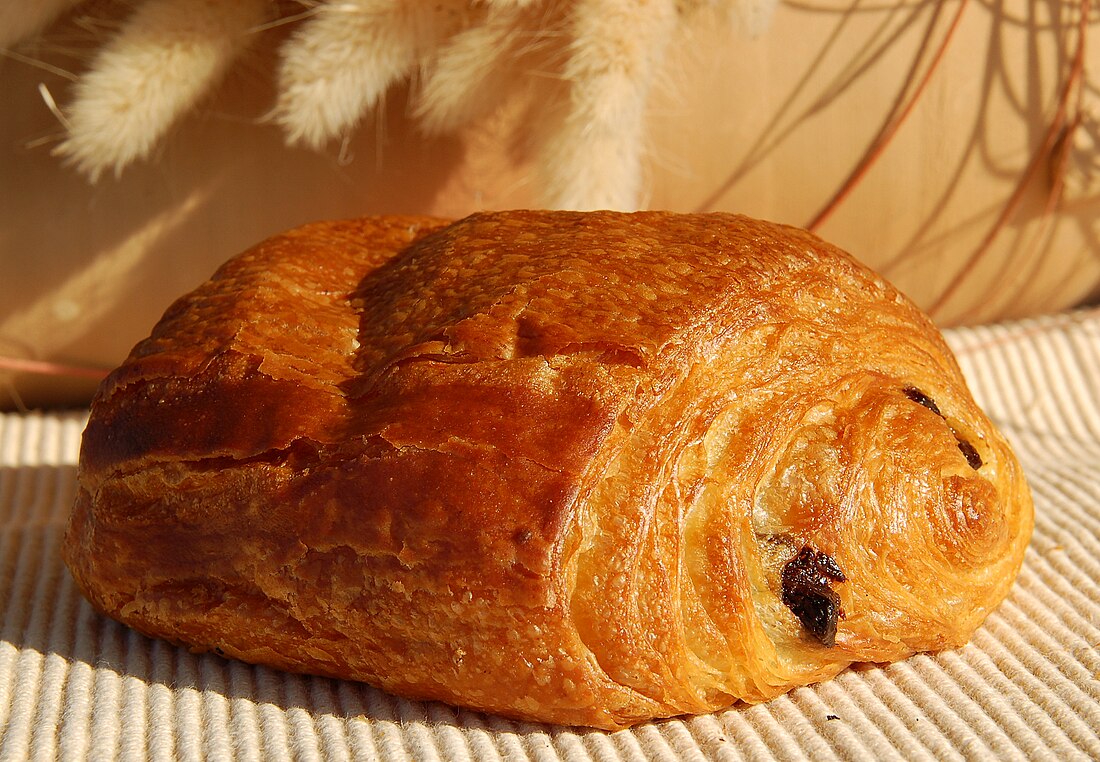Top Qs
Timeline
Chat
Perspective
Viennoiserie
Type of baked goods From Wikipedia, the free encyclopedia
Remove ads
Viennoiseries (French: [vjɛnwazʁi]; English: "things in the style of Vienna") is the name given by professional chefs to describe yeast-leavened dough products that are at a meeting point between bread and pastry,[1] which was described by the Dictionnaire Petit Robert as neither a pastry nor a bread.[2] The dough is sweetened with sugar and enriched with either butter, eggs, milk or a combination of the three. There are two classes of Viennoiserie; non-laminated dough products include brioche, pandoro, and gibassier, while laminated dough products include croissant and Danish pastry.[1][3] Viennoiseries are typically eaten at breakfast or as snacks.[4]
Remove ads
History
The popularity of Viennese-style baked goods in France began with the Boulangerie Viennoise, which was opened by Austrian August Zang in 1839. The first usage of the expression pâtisseries viennoises appeared in 1877 in a book by the French author Alphonse Daudet, Le Nabab.[5]
Types of Viennoiserie
There are two types of Viennoiserie, non-laminated and laminated in their manufacturing. The processes to create the dough are slightly different:[1]
Remove ads
Styles of Viennoiserie
Some cinnamon roll recipes use this type of dough.
See also
References
Wikiwand - on
Seamless Wikipedia browsing. On steroids.
Remove ads




















